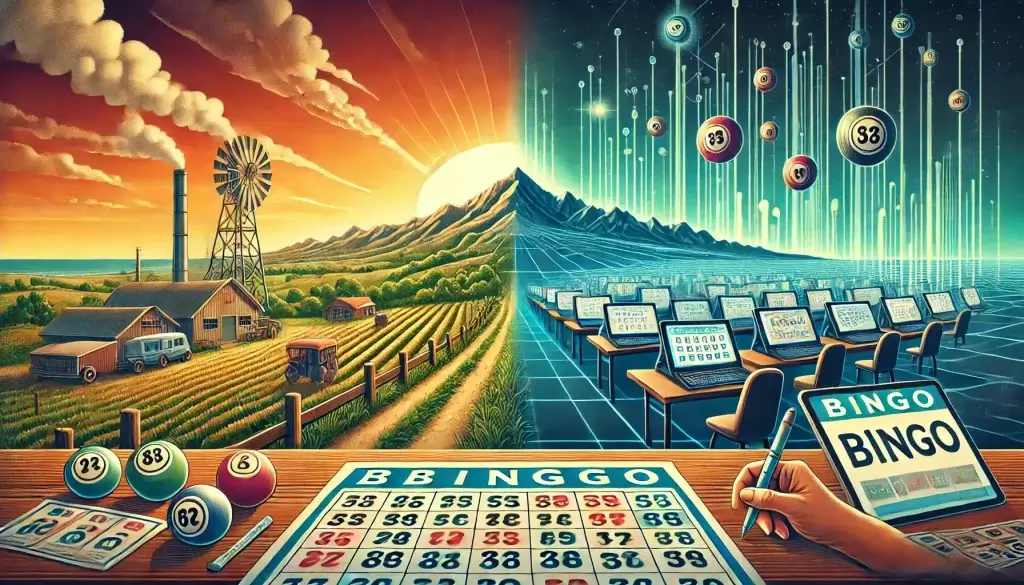Bingo, a game that has woven itself into the social fabric of many cultures, continues to captivate players with its simple rules and potential for addictive enjoyment. First gaining widespread popularity in the early 20th century, the bingo we know today is firmly rooted in history yet constantly evolving to adapt to the tastes and desires of contemporary audiences. As technology changes the way we interact with traditional games, bingo stands as a fascinating example of how classic games can intertwine with modern innovations.
The Origins of Bingo
The origins of bingo can be traced back to 16th century Italy. Known as “Il Gioco del Lotto d’Italia,” the game was played as an Italian lottery. By the 18th century, the concept of random number selection had made its way to France, where it became known as “Le Lotto.” This version was especially favoured by the French aristocracy and was used as a form of entertainment at elite gatherings. As the game travelled through the ages and across borders, it adapted and evolved, taking on different cultural nuances.
It wasn’t until the 20th century that bingo truly began to take the form we recognize today. Edwin S. Lowe, a toy salesman from New York, encountered the game at a carnival in Atlanta in 1929. At the time, it was known as “Beano,” with players covering numbers on their cards with beans. Lowe saw potential in the game and brought it back to New York, where it was quickly embraced by his friends. Due to an excited player’s audible accident of shouting “Bingo” instead of “Beano,” the name “Bingo” was born.
The Growth and Popularity of Bingo
By the mid-20th century, bingo halls were a common feature across the United Kingdom and the United States. The game was seen as a casual community activity, often hosted in churches, community centres, and local halls. Its straightforward rules made it accessible to people of all ages, further broadening its appeal. A highly social game, bingo allowed communities to gather in a relaxed environment with friends, fostering a sense of inclusion and camaraderie. The impact of bingo on social interaction cannot be overstated; it serves as both entertainment and a vital social nexus in many towns and cities.
The simplicity and adaptability of bingo are key to its enduring appeal. Unlike more complex games requiring a deep understanding of rules and strategies, bingo is instantly accessible. This has made it especially popular among older populations, though it remains a cross-generational favourite.
The Digital Revolution: Bringing Bingo Online
With the rise of the internet, bingo was well-positioned to make the jump to the virtual world. Online bingo platforms began to emerge in the late 1990s, offering players the chance to engage in their favourite pastime from the comfort of their own homes. These platforms leveraged the connectivity of the internet to develop a new social aspect—chat rooms and forums where players could interact with each other. This feature kept the social spirit of bingo alive even when players were not physically present together.
Technology has continued to shape modern variations of bingo. Today, bingo apps and online platforms boast a variety of modifications, from themed games to jackpots, all designed to attract the modern player and keep the game fresh. Incorporating elements like bonuses, in-game activities, and real-time multiplayer capabilities, online bingo represents a significant shift from traditional hall play while retaining its essence.
The Future of Bingo
Looking ahead, the future of bingo is likely to be shaped by advances in technology and changing player demographics. Virtual reality (VR) offers exciting possibilities for a more immersive bingo experience. Imagine entering a virtual bingo hall with avatars of players from around the world, each experiencing the game in a shared space that mimics the lively atmosphere of a physical venue.
Cassia Rowley is the mastermind behind advertising at The Bad Pod. She blends creativity with strategy to make sure ads on our site do more than just show up—they spark interest and make connections. Cassia turns simple ad placements into engaging experiences that mesh seamlessly with our content, truly capturing the attention of our audience.


